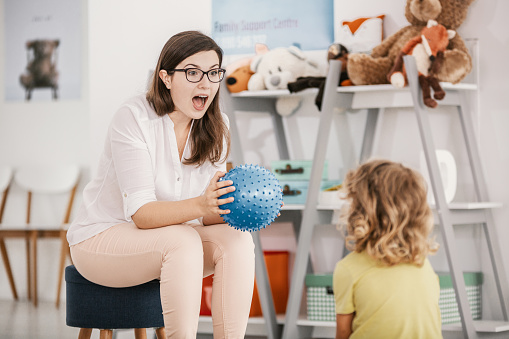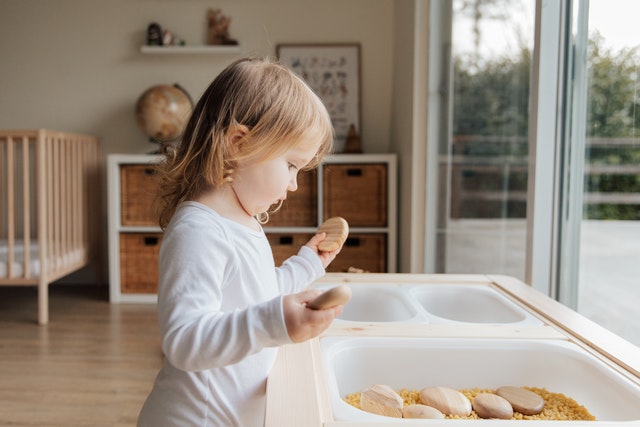Our brain is programmed to regulate and produce sensory experiences like smell, touch, taste, seeing, or listening. However, people born with sensory development disorders like autism benefit from sensory rooms to improve learning.
Math & ELA | PreK To Grade 5
Kids see fun.
You see real learning outcomes.
Watch your kids fall in love with math & reading through our scientifically designed curriculum.
Parents, try for free Teachers, use for free
For those people, sensory stimuli can generate negative responses. Thus, if you have specially-abled students in your class with sensory disorders, you can help them with a sensory room.
A quiet space studded with captivating lights, cozy swings, and soothing sounds. It is a calming area for sensory-challenged children to burn off their excess energy.
Sounds interesting?
So, let’s learn about sensory rooms and how to set up one in your school.
Related Reading: The Learning Zone Model: A Complete Guide to the Zones of Learning
What are Sensory Rooms?
A sensory room is designed to assist a student with sensory issues to control their brain’s negative reactions. It can be a whole room or a small corner inside the classroom.
This room is designed to help students to cope with external stimuli. The sensory room is designed separately for every sensory-challenged child. Every sense disabled person needs different things to cope with the world around them.
Therefore, you should create a multi-sensory room in your school that can accommodate every child with special needs.
Sensory Room Evaluation

Sensory rooms have been present for some time now. Two Dutch therapists started these rooms in the early 1970s. The room’s primary purpose is to let disabled people enjoy their surroundings via slow sensory integration experiences.
In this high-tech era, the demand and scale of sensory rooms have expanded significantly. Thus, many schools are setting up sensory rooms to help their students learn how to control their senses.
How Can Sensory Rooms Help Students With Special Needs?

Sensory rooms are fun, calming, and exciting places for special children who cannot control their senses. Students with autism spectrum or other development challenges can gain several benefits from sensory rooms, such as:
Related Reading: Brilliant Math Quotes to Share with Students to Inspire Them
Control Negative Reactions
Some sensory stimuli can trigger adverse reactions among children, like anger, irritation, etc. Therefore, making an agitated student spend some time in a dimly lighted room can calm them.
Some sensory rooms have aromatherapy diffusers, white noise machines, and other emotion-controlling gadgets.
Senses Awareness
Some people are low-sense. That means they don’t understand how to respond to certain senses. Children with autism often seem aloof about many emotional skills.
Thus, they need specially designed toys to make them aware of their senses, such as bubble mirrors, vibrating toys, etc.
Learn to Socialize
Lack of social skills is a massive problem among special sensed people. So, setting up a sensory room in schools can allow students to interact with others.
Teachers can monitor students and help them make more aware of their body movements. They can show them how to shake hands and express emotions toward others, like empathy, sympathy, etc.
Help with Focus
People with autism, ADHD, or other developmental disorders often get distracted easily. They struggle to pay attention to things going on around them. This can impact their academic performance, too.
Thanks to sensory rooms, they can learn to understand their surroundings and focus on things going on in the classroom.
Develop Motor Skills
Sensory disorders can lead to muscle movement challenges. Special students might struggle to align their muscular movements with brain orders. Therefore, the safe sensory room allows students to practice motor skills using special equipment like swings, skipping ropes, etc.
Cognitive Development
Sensory rooms will not help you train your students’ brains. It will also help you teach them how to cope when their reactions get louder. Particularly, autistic kids can learn what external stimuli bring out the worst reactions among them. This will help you ensure you do not practice triggering activities in the class.
How to Set Up a Sensory Room in Your School or Class?

If your school board is ready, you can set up a dedicated multiple-purpose sensory room on the premises. Otherwise, you can use a small corner in your classroom to design a sensory zone.
It is super affordable and straightforward to set up a sensory room. Here’s how you can do that:
Related Reading: Best Classroom Games to Help Teachers Elevate Their Efforts
Step 1. Understand requirements
Every sensory disorder child has different needs. Therefore, if you are setting up a small sensory room for a particular student inside your classroom, you should understand their stimulation needs and set up the room accordingly.
However, if you plan to set up a multipurpose sensory room for the entire school, you need to add different toys and things that can help everyone.
Step 2. Select and label the area
Next, you must find a peaceful and relaxing area to set up a sensory room in your school. Select a room with fresh sunlight, a playground view, and fewer outdoor noises.
After that, divide the sensory room into sections like a calming corner, time-out area, or thinking zone. This creates the mindset that there is a safe place to go when a certain behavior triggers.
Step 3. Select calming color tones and lighting fixtures
Select a calming color palette to paint the sensory room, such as white, ocean blue, green, etc. Avoid vibrant and volatile colors like red, orange, and maroon.
Also, use mellow LED lights that will not pinch students’ eyes. Use mute lighting covered with plastic or fabric.
Step 4. Add posters
You can purchase or handmade some therapeutic posters for your sensory room. For example, you can write calming quotes and draw soothing scenes or shapes on the posters.
Step 5. Use mats or rugs
Seating on the floor can help connect students with the ground and calm their minds. Therefore, place carpet remnants or yoga mats to soften the surface and observe sounds in the sensory classroom.
Step 6. Get equipment for the room
You need to buy easy-to-clean and set-up equipment based on your sensory room design. Also, be mindful of your budget before getting sensory equipment. Here are a few everyday sensory items:
- Therapy balls of all textures, shapes, and sizes
- Body sack
- Fabric lights
- Bean bags
- Stuffed animals
- Sensory pea pod
- Play tents and tunnels
- Sensory swings, spinners, and bins
- Weighted blankets, etc.
Step 7. Start slow
First, you should create a sensory room for children receiving occupational therapy and needing special assistance. This way, you can learn how the sensory room works and how you can improve it. In addition, starting slow will help you stay within your budget.
Step 8. Train your colleagues
One teacher cannot keep the sensory room running. You need peer support to provide special attention to each student’s senses. Therefore, train other teachers to assist you in the sensory room.
Parting Remarks

Sensory rooms are crucial today. First, they help provide better academic and cognitive training to special children. It creates a haven for sensory-challenged students to show care and affection.
As previously discussed, creating a sensory room is affordable and straightforward. You can set up a small sensory corner inside your classroom. So, no matter how big or small, take a step to set up a sensory room in your school.
Frequently Asked Questions
Who needs a sensory room?
Sensory rooms are helpful for anyone who has learning difficulties, sensory impairment, or developmental disabilities. It creates a safe environment that builds confidence among specially-abled children.
What is sensory wall and what are their benefits?
You can create a sensory wall if you don’t have sufficient space to build a sensory room. This wall will help to:
- Increase concentration
- Improve cognitive development
- Stimulate all five senses like hearing, seeing, smell, touch or taste
- Improves coordination and motor development
What are common sensory disorders among children?
Some common sensory disorders are Autism spectrum disorder (ASD), Attention deficit hyperactivity disorder (ADHD), Schizophrenia, Sleep disorder, Blindness, Glaucoma, Microphthalmia, Sensory Processing Disorder, and many more.









